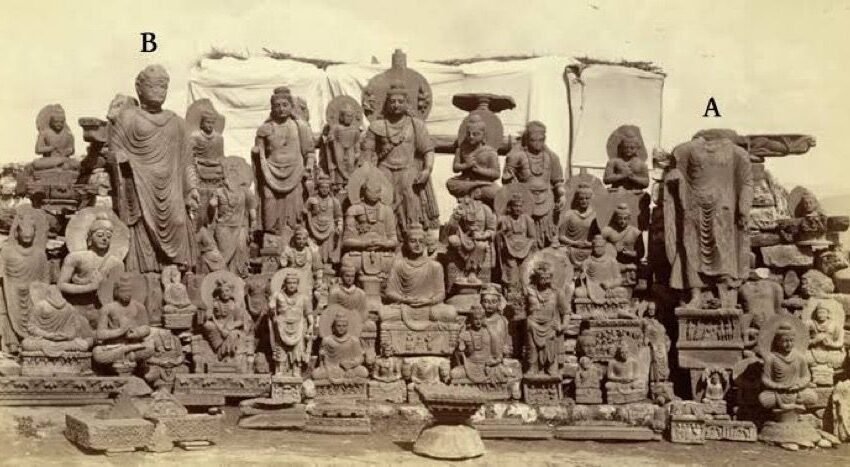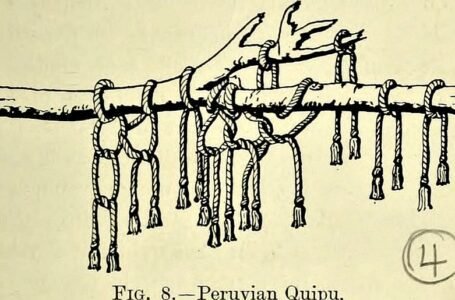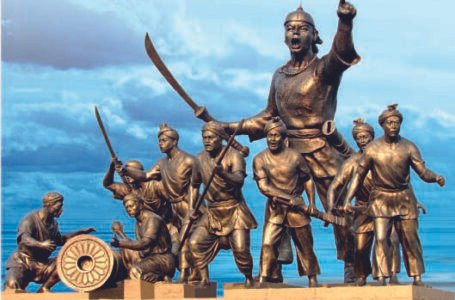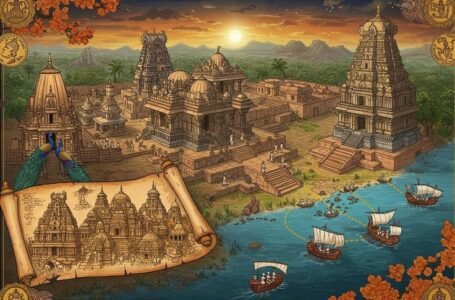Where Cultures Meet: The Preservation of Indo-Greek Heritage in India

-Bhoomee Vats
The other name for the Indo-Greek Kingdom is the Graeco-Indian Kingdom. It is historically famous as the Yavana Kingdom and was a Hellenistic-era Greek kingdom that covered parts of Afghanistan, all of Pakistan (specifically the northwest region of the Indian subcontinent), and a small area of Iran, from 180 B.C.E. to around 10 C.E. In 180 B.C.E., the Greco-Bactrian king Demetrius I, son of the Greco-Bactrian king Euthydemus I, led his troops across the Hindu Kush and invaded India, establishing the start of the kingdom in these regions beyond its original land.
The House of Scindia, which was earlier also known as Sendrak, ruled the Gwalior state of India and was a Hindu Maratha Royal House. Under Peshwa Bajirao, Ranoji Scindia rose as a great military commander. This house played a major role in preserving not only central Indian archaeological monuments but also helped preserve the heritage and history of the Indo-Greek Kingdom in their region. In 1913, Maharaja Madho Rao Scindia established an archaeological department within the state of Gwalior, whose aim was to preserve and explore ancient artifacts and relics. M.B. Garde was appointed head of the department, responsible for over 1200 listed ancient monuments, and worked on the policy of “exploration, preservation, and education.”
The History of the Scindia Kingdom
This house is from the Deccan region of India and of Maratha origin. Even though history does not mention them much, the Scindia dynasty ruled over a very large region of India and even established control, though not recognized by law, over the capital city of the Mughals, Delhi. The dynasty made its first official capital Ujjain, a culturally and historically significant city of India and even Greeks made a mention, one example of this mention is when Ptolemy (150 A.D.) mentions Chashtana as Tiastenos of Ozene. George Woodcock, in his book Greeks in India, says, “In ancient times in this region the Greeks allied themselves with the local Saka and Parthian chieftains, and shared their domination of the northern part of this region until they were expelled by…Andhra King Gautamiputra about 150 AD.”
After the struggle between the British East India Company and the House of Scindia, which ended with the victory of the East India Company, the Scindia dynasty’s rule was limited to rule on the then princely state of Gwalior. Maharaja Madho Rao Scindia had a huge hand in significantly developing the study of the Greek presence in South Asia. He contributed to the discovery of inscriptions in the Pali language, written in Brahmi characters on Heliodoros’ pillar. He also contributed to the preservation of the pillar and ensured that his archaeological department documented each one of its features and location in detail. His son, Maharaja Jiwajirao M. Scindia, wrote about the city of Besnagar and where it was found. He writes, “Today mounds and other vestiges of ancient civilization mark the site of this once-famous city, and it is here that we get a glimpse of the intercourse that went on between India and the early Greek invaders of Asia.”
The Preservation
Maharaja Madho Rao Scindia established a department in 1913 dedicated to exploring and preserving valuable monuments of ancient art, architecture, and culture in his state of Gwalior. M. B. Garde was appointed to lead the new department that year and became the director of archaeology in Scindia’s territory. Garde completed his archaeological training under Sir John Marshall, one of the greatest director generals of archaeology in India. Over 1,200 individual ancient monuments have been cataloged in Maharaja Jiwajirao M. Scindia’s State.
The earliest Hindu monument in the state of Maharaja Jiwajirao M., was a Garuda pillar at Besnagar, which features an interesting Vaishnava inscription and was established by Heliodoros, a Greek who called himself a Bhagavata and seemingly embraced Hinduism. In his book Gwalior Today, Michael H. Brown writes, “The Heliodorus Pillar stands on an eminence on the northern bank of the river Bes—it was once in a suburb of Vidisha. Popularly known as Khamb Baba, it bears an inscription in Pali stating that it was set up as a Garuda pillar in [honor] of the god Vasudeva (Vishnu) by the Greek Heliodoros, who had come to the court of King Bhagabhadra of Vidisa as an ambassador from the Greek King Antialcidas of Takshasila (Taxila) in the Punjab (circa 150 B.C.). Heliodoros styled himself a Bhagavata, having embraced Hinduism.” The pillar of Heliodoros is very important for our history as it provides us with strong evidence of the conversion of Greeks to Indian faiths. It is a monolithic pillar, which is locally known as the Khamb Baba. It stands on a prominent ridge on the north bank of the Bes River, a little to the north-east of the city of Besnagar.
Conclusion
The inscription on the pillar of Heliodoros at Besnagar is still one of the most important sources for the study of Hellenic presence in not just South Asia but especially in India. The inscriptions on this pillar were discovered and preserved, and this credit goes to the efforts of the late Maharaja Madho Rao Scindia’s archaeological department. Rao is thus a highly respected and important figure for students of Indo-Greek and Graeco-Bactrian history. The archaeological reports of Gwalior State, ruled by Scindia, are a gold mine of archaeological information. The study on Greek presence in South Asia is ongoing and provides an opportunity for intercultural dialogue in an increasingly diversifying world.
The story of Indo-Greek heritage in India is not just a story of two different empires that existed ages ago, but also of the efforts to reclaim and preserve a cultural past and identity. The Indo-Greek kingdom faded centuries ago, but its influence remains through art, architecture, and monuments. The Scindian rulers of Gwalior emerged as unexpected yet very significant rulers who tried to protect this legacy through their efforts. Their commitment to museums, archaeological patronage, and historical research, in a time when history itself was being made, reflects a broader vision.


